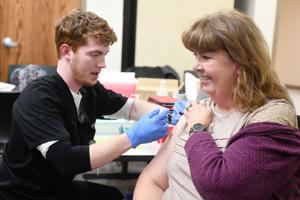UPDATE: U.S. hospitals are experiencing an acute staffing crisis, with reports of widespread staffing shortages exacerbated by the lingering effects of the COVID-19 pandemic. This urgent situation, affecting facilities nationwide, is leading to increased burnout among health care workers and reduced patient care capacity.
Just this week, nursing officials in Anderson highlighted alarming trends that are reshaping the health care landscape. The ongoing challenges include a significant rise in health care worker deaths, increased stress levels, and an alarming decline in available hospital beds. Many facilities are struggling to keep up with patient demands, leaving them operating at critical levels.
According to the latest data, hospitals across the country report staffing shortages that are impacting patient care. A staggering 20% of health care workers have indicated they are considering leaving the profession due to overwhelming stress and burnout. This crisis is not just a local issue; it is a national emergency affecting communities from coast to coast.
In a statement released earlier today, officials emphasized the need for immediate action to address these staffing concerns. They urge health care institutions to prioritize mental health support for their workers and implement strategies to attract new talent into the field. The emotional toll on these frontline workers cannot be understated; many are facing unprecedented levels of anxiety and fatigue.
With the flu season approaching and potential surges in COVID-19 cases, the situation is expected to worsen. Hospitals are warning that without urgent intervention, they may be forced to limit services or even close some departments. The public is being urged to support health care workers during this crisis and recognize their critical role in maintaining community health.
As this situation develops, nursing officials will continue to monitor staffing levels and advocate for necessary changes. The health care community is calling for collaboration among government agencies, health organizations, and educational institutions to create a sustainable workforce that can meet the demands of today’s health care environment.
Stay tuned for updates on this developing story as more information becomes available. The health and safety of our communities depend on resolving this urgent staffing crisis now.








































































